Forsythe NWR – Feb 6th
Year Count: 110 | Species: 51 | FOY Birds: 6 | Lifers: 0
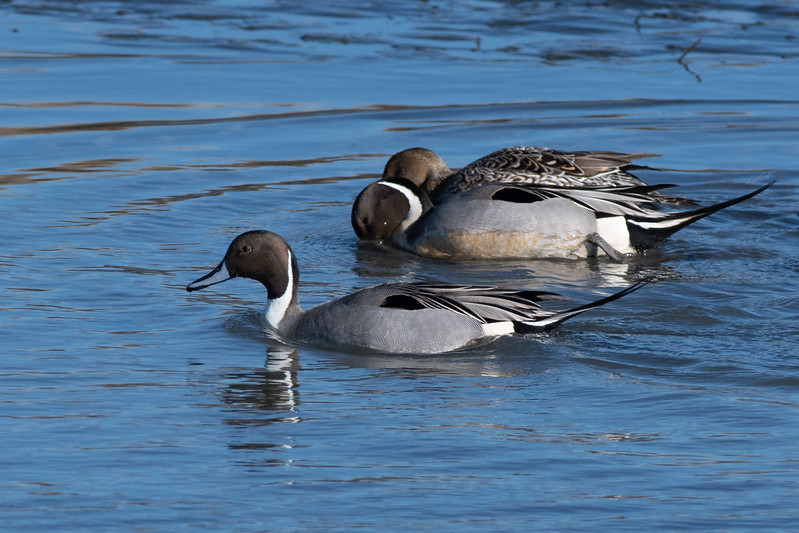
For my first trip in February, I picked a location which had a number of relative rarities seen recently. It was a beautiful day for a winter drive, so I packed up my gear to spend the morning at the Refuge. Edwin B. Forsythe National Wildlife Refuge at Brigantine (say that 3 times fast) is a jewel of the New Jersey eastern coast. A salt marsh, the refuge attracts a wide variety of waterfowl, shorebirds and other migrants to its mudflats, channels and grasslands. From the park website:
The Edwin B. Forsythe National Wildlife Refuge protects more than 47,000 acres of southern New Jersey coastal habitats which is actively managed for migratory birds. The refuge’s location in one of the Atlantic Flyway’s most active flight paths makes it an important link in seasonal bird migration. Its value for the protection of water birds and their habitat continues to increase as people develop the New Jersey shore for our own use.
About Edwin B. Forsythe NWR
The Woods Were Alive
Eager as I was to get around the 8.1-mile wildlife drive, the woods near the parking lot were alive with the twitter of bird song and caught my eye. My last trip in December had brought me good luck in that spot, and while it wasn’t quite as good as that blustery day, it was a nice start as the Carolina chickadees competed with the Carolina wrens for supremacy of morning song. Woodpeckers called from deeper in the woods, and crows flew from the treetops in their black angst at the wind. A small flock of American Goldfinch flitted amidst the cedars that lined the parking lot, and a tufted titmouse bee-bee-bee’d nearby. As peaceful and enjoyable as the scene was, it was time to move onto the drive where the real excitement might be.
The Gull Pond & Tower
The beginning of the drive has two interesting features – the Leeds Eco Trail and The Gull Pond. The former is a short boardwalk into the marsh and a 1/4-mile walking trail through a small patch of upland woods that tend to offer a very different set of birds than most of the rest of the refuge. Lined with cedars and hardwoods, the trail often hides woodland birds like passerines and warblers, though they would be rarer in winter. But, considering my main targets were more likely to be hiding in the marshes in the early morning, I skipped them to get right to the main event.
The Gull Pond lies on the only 2-way section of the wildlife drive; once you enter the main drive, you’re committed to the full 8-mile path and an almost hour-long drive through the 4 main pools contained within. The tower overlooks one of the freshwater ponds on sight, as well as one of the 3 saltwater pools, so it often offers up views of a wide variety of waterfowl and other birds. Within the Experimental pool were a number of common winter waterfowl: mallards, mute swans, bufflehead. A trio of Wood Duck flew past, giving me species #105 for the year.
Turning toward the North Pool, a large-ish group of Greater Yellowlegs stood hunkered in on a small island, mixed in with a small number of Ring-billed Gulls. It’s always a little strange to see shorebirds like yellowlegs around in the winter but this is one of those places where it happens. A bit of movement caught my eye, revealing a hovering Belted Kingfisher hovering over the water, looking for a meal.

Climbing up the tower to get a better look around, I was given a nice look at a Bald Eagle sitting atop a snag, a red-tailed hawk flew past it, barely registering on the larger bird of prey’s radar. A peregrine hunkered in a small bush, watching the ducks swim warily nearby. And in a tall pine sat the unmistakable form of a Great Horned Owl. Not bad for a 5-minute, 360-degree view, though I didn’t find either of my target raptors: short-eared owls or Northern harriers. A last glance back at the pond revealed a single, surprising Pied-billed Grebe swam peacefully in the morning sun, giving me something to watch for a few minutes before heading back toward the main drive.

But I stopped when a small flock of ring-billed gulls appeared hidden in a small hideaway behind some cedars, offering me obscured but gorgeous views. The males were resplendent with their purple sheen in the golden light, while the females’ duller but attractive plumage portrayed a wonderful contrast.
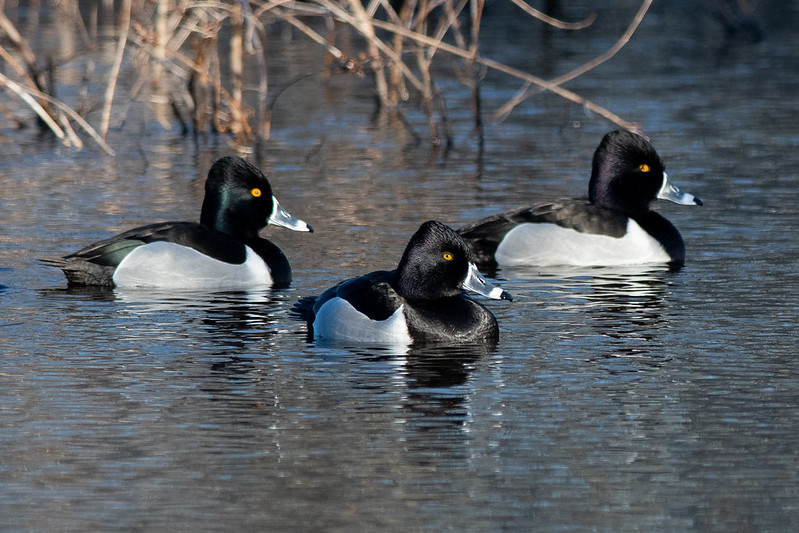
Eastern Pools
Getting onto the drive, I was greeted with very low tides – something that can prove to be a negative for the birds in this place. The entire marsh is remarkable tidal, with a long mudflat at low tide becoming a wide pool several feet deep at high tide. It’s this variety that provides the nutrition for the grasses, fish, mollusks and crustaceans that make this such a bountiful feeding ground for so many species.
It wasn’t empty by any means. The ever-present American Black Ducks waded through the muck, as did some of the other duck species like Northern Shovelers and Green-winged Teal. Low tide has the added “benefit” of really giving you the scent of the place, that deep mixture of decay, mud, salt and fish that salt marshes are known for – but the ducks don’t seem to mind.

On the western side of the eastern pools are the places where the shorebirds often congregate. A bunch of smaller shorebirds took flight out of the reeds, treating me to a brace of dowitchers. Usually in winter, you’ll only encounter Short-billed Dowitcher in the winter and even those are uncommon. But there had been a even more rare Long-billed Dowitcher seen and I was surprised to be able to pick it out in flight – the longer bill, bulkier body, white patch on the rump. Plus I heard the call, which nailed the ID for me.
One of the most common residents in winter at Forsythe are the snow geese, which number in the 1000s in most years. At first it seemed like they were missing, a lack of their familiar squonks piercing the air. But then I came upon them as well as a large float of Brant in Turtle Cove. There were hundreds there (and I would later discover the rest of their brethren further along the drive), most of which were still in sleeping poses in the chill morning air. Out in the cove, hundreds more birds floated in the dim light beyond my ability to identify except for a few red-breasted merganser who floated nearby.

Along the way of the drives, the various gulls were doing what they often do – picking up oyster and clams and dropping them onto the hard surface of the drive in an effort to crack the shells and get to the juicy insides. In the summer, the smarter gulls learn to drop the shells just in front of vehicles to let the heavy tires do the work for them that multiple drops would normally accomplish. Ring-billed, Herring and Great Black-backed Gulls were in good numbers, though it’s usually the herring gulls that do this shell-dropping practice. Sometimes their aim is great, other times you end up dodging the falling missiles.
Along one of the remaining inflows of water, something caught my attention. There was something swimming in the channel but it didn’t look right for a muskrat or any other mammal. It was only when it reached the edge that I realized it was a Clapper Rail, swimming instead of the normal walking through the mud and reeds as they’re wont to do.

The Western Pools
The backside of the drive was mostly quiet – a bunch of gulls, a few Hooded Merganser and Bufflehead, lots of American Black Ducks. It wasn’t until I got to the dogleg that things started to get interesting again. A Great Blue Heron gave me a fantastic view from the nearly famous cedar that stands as a sentinel at the dogleg.
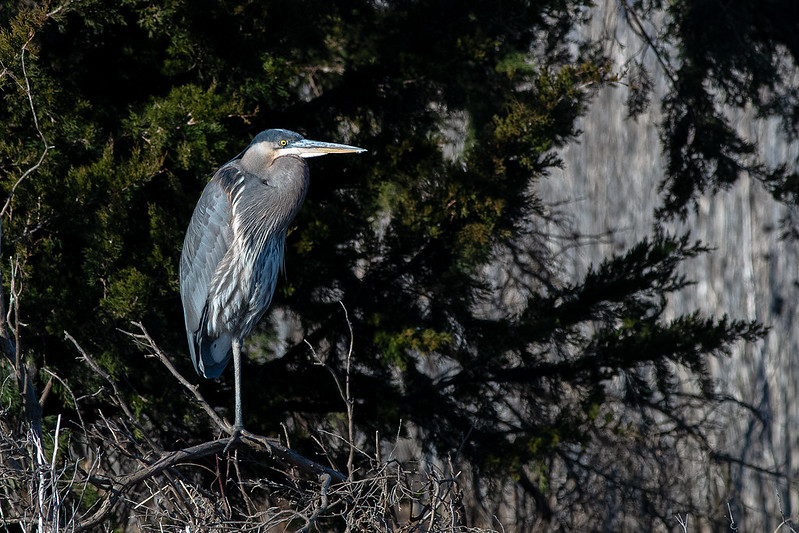
Numerous bald eagles sat on the small sandbars in the middle of the North Pool, a blend of adults and immature birds. This has been a great year for eagles at Forsythe, with upward of 30 being seen in a single day and reports of Golden Eagles also coming through at different times. (In March, when I’m writing this, at least one nest had been found nearby).
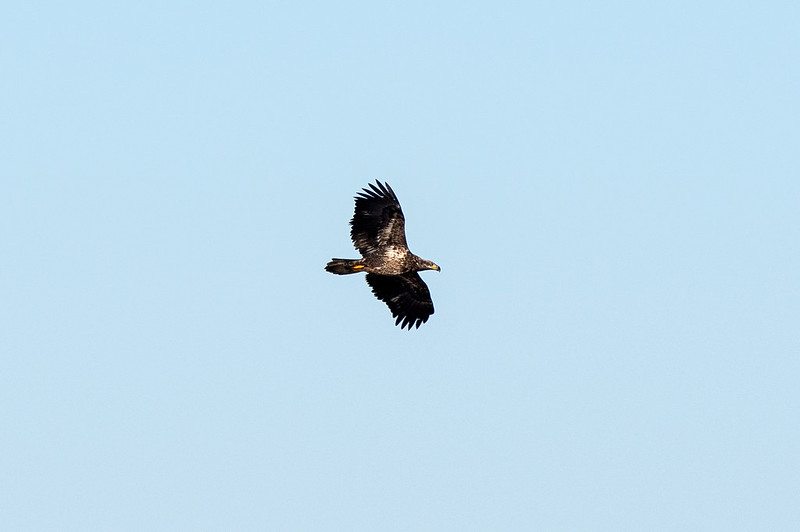

Perhaps one of the weirdest finds was the continuing American White Pelican which has been a resident at the refuge all fall and winter. White Pelicans are very rare in NJ at any time of year, let along over-wintering in the state. Unfortunately, the birds is almost always seen in the far distant part of the pond against the distant reeds. It’s unique enough to identify but not close enough for a decent photo, sadly.

Jen’s Trail & Nature Trail
Near the end of the drive is a short trail which provides a short respite for people who have been making the drive. The trail is another woodland, mostly new growth forest around a large pond. The trail can be a feast or famine adventure in spring and summer, but is usually fairly quiet in the winter. But not devoid of birds as I got a great look (within 50′) of a bald eagle and a little visit from this Northern Mockingbird.
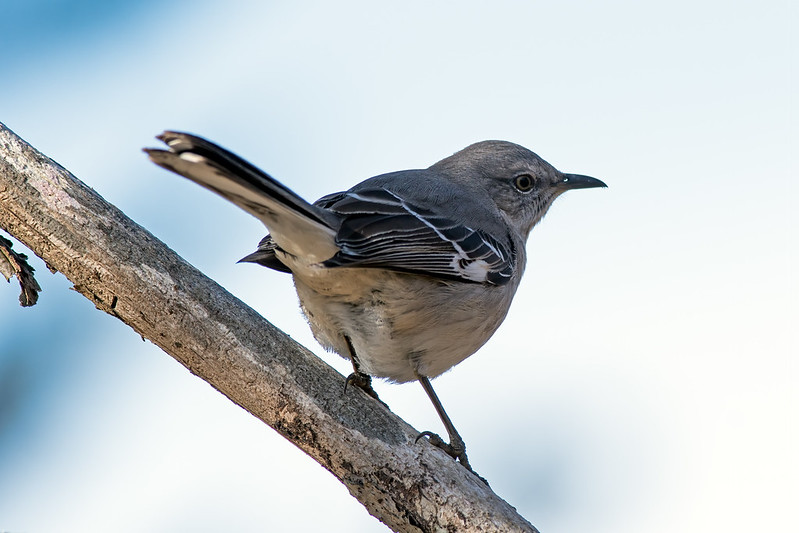
Making my way back to the parking lot of a ‘rest break’ before heading home, I decided to do a little hiking. The birding on the Bristow Trail is much more forest inhabitants like small songbirds, including titmice, chickadees, robins, cardinals, a pesky Winter Wren who stayed agonizingly out of camera view and this handsome Northern Flicker.

All in all, it was a good day – over 50 species all told and a half-dozen for the year list. Plus a beautiful day of enjoying the sun, the salt air and the birds.
| # | Species |
| 105 | Wood Duck |
| 106 | Clapper Rail |
| 107 | American White Pelican |
| 108 | Northern Harrier |
| 109 | Short-billed Dowitcher |
| 110 | Long-billed Dowitcher |
| Snow Goose | |
| Canada Goose | |
| Brant | |
| Mute Swan | |
| Northern Shoveler | |
| Gadwall | |
| Mallard | |
| American Black Duck | |
| Northern Pintail | |
| Green-winged Teal | |
| Ring-necked Duck | |
| Bufflehead | |
| Hooded Merganser | |
| Common Merganser | |
| Red-breasted Merganser | |
| Pied-billed Grebe | |
| Greater Yellowlegs | |
| Ring-billed Gull | |
| Herring Gull | |
| Great Black-backed Gull | |
| Great Blue Heron | |
| Turkey Vulture | |
| Bald Eagle | |
| Red-tailed Hawk | |
| Great-Horned Owl | |
| Belted Kingfishter | |
| Red-bellied Woodpecker | |
| Downy Woodpecker | |
| Northern Flicker | |
| Peregrine Falcon | |
| American Crow | |
| Carolina Chickadee | |
| Tufted Titmouse | |
| White-breasted Nuthatch | |
| Winter Wren | |
| Carolina Wren | |
| American Robin | |
| American Goldfinch | |
| Song Sparrow | |
| Red-winged Blackbird | |
| Northern Cardinal |
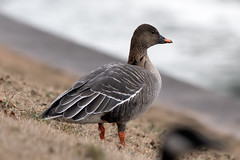 Previous Post
Previous Post